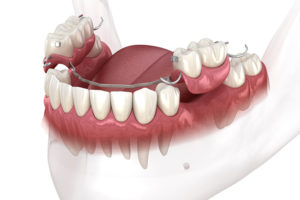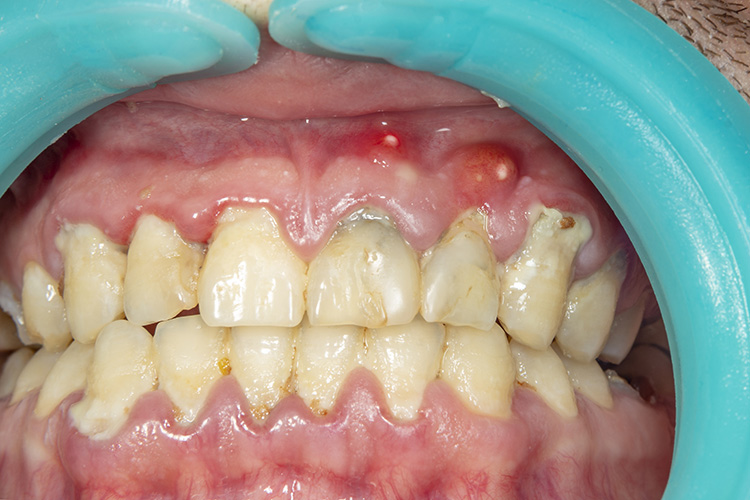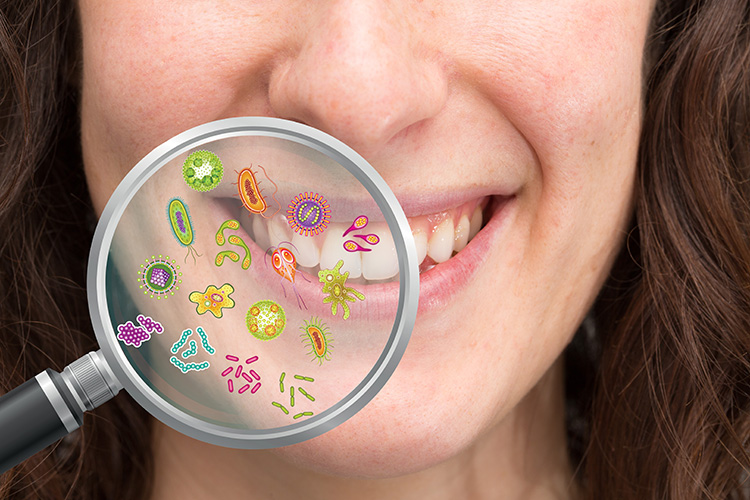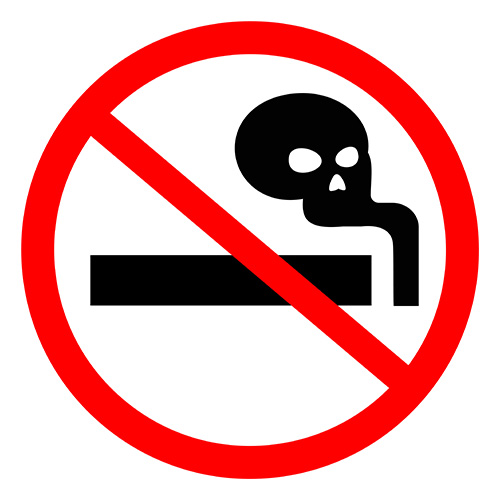Everything You Need to Know About Dental Flippers

According to studies published in the National Library of Medicine, nearly 180 million Americans have at least one tooth missing, and more than 35 million are missing all their teeth.
Investing in a dental flipper can help you maintain a complete smile, no matter how many teeth you have missing. Dental flippers have become very popular among those who wish to replace missing teeth with a temporary tooth replacement solution until they can work out a more permanent solution.
So, what are dental flippers, and should you consider going with a dental flipper tooth over other tooth replacement options? Find out everything you need to know below.
What Are Dental Flippers?
Dental flippers, also called flipper teeth or partial dentures, are removable retainers designed to sit on either the roof of a patient’s mouth or lower jaw. They have at least one prosthetic tooth attached to them, and in some cases, they’ll even have multiple prosthetic teeth. A flipper tooth can fill in the gaps left behind by back or front teeth that have gone missing and restore a person’s smile.
A flipper tooth is constructed from an acrylic dental-grade resin that a dentist can make to match your gum’s colors. They also have metal clasps that can attach directly to the adjacent teeth surrounding the gaps created by a missing tooth or teeth. As long as you work with the right dental professional, they can ensure a tooth flipper fits properly in your mouth alongside your natural teeth.
What Are the Benefits of Flipper Teeth?
Whether you consider flipper teeth a temporary replacement or a long-term solution, you’ll appreciate all the benefits they can provide when you need a gap filled quickly. Here are several advantages of using removable partial dentures to replace a single tooth or multiple teeth:
- It’s easy for a dental technician to fabricate them with the exact turnaround time often being just a day or two.
- A partial denture is made to match your natural teeth and doesn’t give off the appearance of false teeth.
- They can stop your existing teeth from shifting into the gaps that teeth adjacent to them create.
They’re also more affordable than most other teeth replacement options. In most cases, your dentist can provide them for under $500, which is much less than many flipper alternatives.
What Are the Drawbacks of Flipper Teeth?
Flipper teeth are a fantastic option for those in the market for removable partial dentures. However, there are some potential drawbacks to utilizing a flipper tooth for tooth replacement. Let’s check them out next:
- They’re made of less durable materials than a dental implant, a dental bridge, and most other alternative options.
- They can cause one tooth problem after another and gum disease if they aren’t cared for.
- It can take time to get used to wearing them, as it can impact the way you chew food and speak.
- They may loosen and require adjustments made by a dentist to stay secure.
- You may deal with receding gums if you don’t remove them often enough.
Ideally, you should also avoid wearing flippers permanently, if possible. It’s a solid temporary tooth replacement solution, but a flipper denture isn’t designed to stand the test of time.
Is a Dental Flipper a Permanent Replacement for Missing Teeth or a Temporary Solution?

Many people with teeth missing who use flipper teeth only do so temporarily. They’re an excellent solution for those in search of an attractive prosthetic tooth option that can be worn temporarily while they wait to get permanent dental implants. It isn’t uncommon for someone who has had a dentist perform a tooth extraction or a bone or tissue graft to wear a flipper partial denture before a permanent solution is put in place during the final restoration process.
However, not everyone who chooses to go with flipper teeth utilizes them to replace teeth temporarily. Since a single dental implant can cost at least a few thousand dollars on average, flipper teeth have become a more cost-effective solution for some people. They might even wear them for the foreseeable future instead of considering the alternatives.
Anyone who plans to use flipper dentures as a permanent replacement tooth option must invest in high-quality flipper teeth and care for them accordingly. Maintaining them involves making time to clean dental flippers with a toothbrush, warm water, and mild soap to prevent plaque and food particles from building up.
To keep a flipper tooth in great condition, you’ll also need to:
- Steer clear of unnecessarily moving a dental flipper around your mouth to reduce the chances of breaking it.
- Avoid eating sticky foods when wearing flipper teeth.
- Store a dental flipper where it won’t dry out when you don’t have the dental appliance in your mouth.
- Stay away from darker-colored foods and beverages that might stain a flipper tooth.
- Remove a flipper tooth before going to bed to let your gums breathe.
Additionally, those wearing a flipper tooth must make their overall oral health a top priority. They should brush and floss their teeth every day and schedule regular dental check-ups with an oral healthcare provider, along with routine cleanings from dental professionals.
Common FAQs related to Flipper Tooth
What Is a Flipper Tooth Made Of?
The flipper tooth is made of acrylic dental-grade resin that matches the color of your gums. The structure has metal clasps that attach to the surrounding natural teeth on either side of the missing teeth. They can easily be removed at night and cleaned with toothpaste or soaked in the denture cleaning solution.
How Long Can You Wear a Dental Flipper?
Dental flippers are generally a temporary replacement for your missing tooth until your gums heal enough for your implant. After that, you can use them for a long term only when your dentist instructs you. However, some may prefer to wear it permanently due to its low cost and lightweight, not to mention that they are easy to adjust.
In the case of minors missing teeth, they wear dental flippers until they are old enough to get an implant.
In either case, you need to care for your dental flipper properly to prevent breakage or damage. Clean the flipper every day to remove the plaque and food particles. This helps protect the teeth and the gums as well.
Can I Sleep with a Flipper Tooth in My Mouth?
A flipper tooth is a temporary situation and should be treated as such. If worn day and night, they exert constant pressure on the tissues under the flipper.
As a consequence, patients could develop receding gums and bone deterioration as well. Wearing a dental flipper all day could also trigger a fungal infection in the gums. Since it is painless, the infection is known.
It is crucial to remove the flippers at night, allowing the gums to breathe. Hence dentists recommend removing them at night for at least 8 hours.
Can I Eat with a Flipper Tooth?
The best part of using a flipper tooth is that you can eat with them and chew much easier. However, you should not exert any pressure since it is very fragile.
- Start with relatively soft foods; cut into small pieces and slowly chew them.
- Take small bites of your food and chew food with both sides of your mouth simultaneously.
- Avoid hard foods like raw vegetables until after the adjustment period.
- Do not pull food from the fork using the front flipper tooth.
How Do You Talk with a Dental Flipper?
Like eating, talking can also be difficult with a flipper tooth. It can be hard at first, but you can adjust to talking with a flipper with training—for example, practice speaking in front of a mirror or with a partner. Or you can call customer service, and you’ll be able to measure how much others understand you. Be prepared to have your dental flipper flying in the beginning. It takes to some time and practice to get used to it.
How Many Teeth Can You Put on a Flipper?
A flipper typically holds one or more teeth and holds on to surrounding teeth for support. Keep in mind that they are temporary and acts as a filler for a gap in the tooth line.
How Do I Remove My Dental Flipper?
Rinse your mouth with warm water or mouth rinse to loosen the flipper tooth. To remove it from the jaw, hold the tooth and disengage the clasps.
Next, firmly grasp the dental flipper teeth and pull them out. You can also wiggle it slightly to dislodge it but avoid twisting for any reason.
What’s the Best Way to Clean Dental Flippers?
You can clean your flipper tooth with a soft-bristle toothbrush, warm water, and mild soap or dishwashing liquid. Rinse thoroughly after washing it before popping it in your mouth. Do not use toothpaste to clean your flipper as it can damage the material.
How Do You Store a Dental Flipper?
Ensure that your flipper tooth doesn’t dry out when you are not using it. Doing so makes them brittle and prone to breaking. Moreover, it would be uncomfortable to wear. Instead, keep them moist by soaking them in a denture cleaner or water when you remove them. With water, make sure it is not too hot as it can cause the material to warp.
What Are the Alternatives to a Flipper Tooth?
If you feel a dental flipper would work well in your specific case, you’re welcome to speak with your dentist about getting one made. They can provide personalized advice on whether or not partial dentures will do the trick for you.
A dentist might advise against using a flipper denture and recommend one of the following dental flipper alternatives:
- Fixed partial dentures
- Snap-On Smile®
- Dental bridges
- Dental implants
Contact Us To Learn More!
Deciding whether a dental flipper is the right option for replacing missing teeth can be difficult. Let the oral health experts from Dr. Dalesandro & Associates help you evaluate all your options and make the best decision. Reach out to us to discover more about the best solutions for replacing missing teeth.
 Periodontal disease affects about 20%-50%
Periodontal disease affects about 20%-50% Causes
Causes With proper treatment and good oral health practices, periodontitis is manageable.
With proper treatment and good oral health practices, periodontitis is manageable.